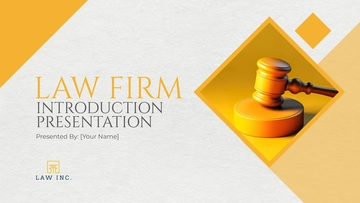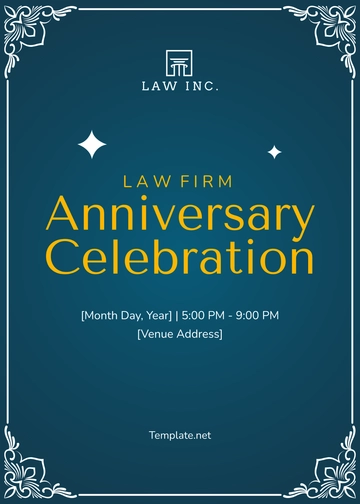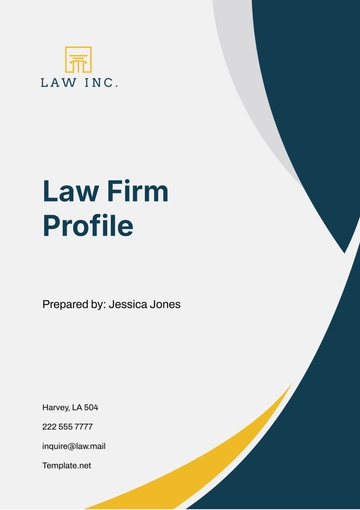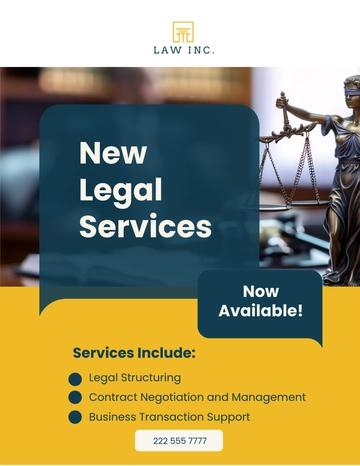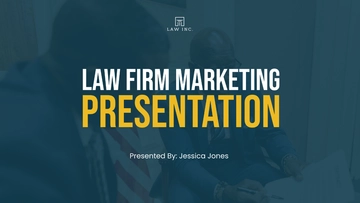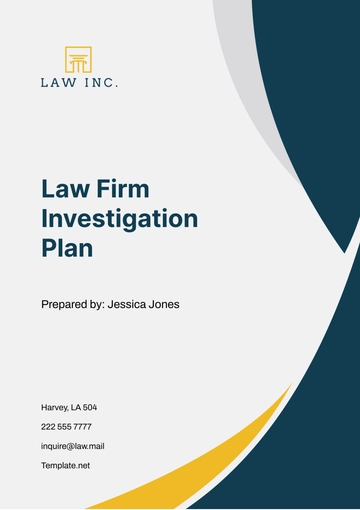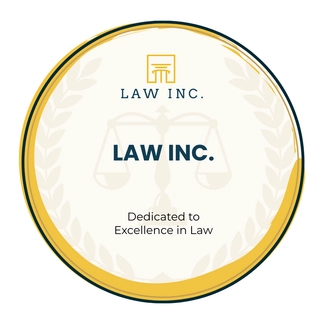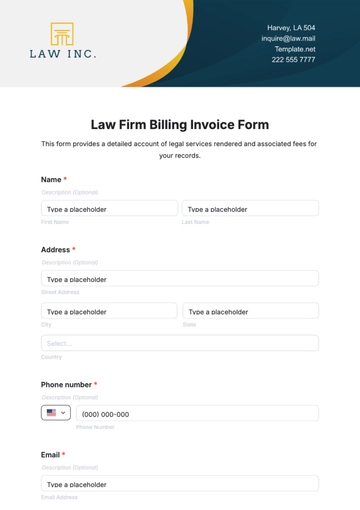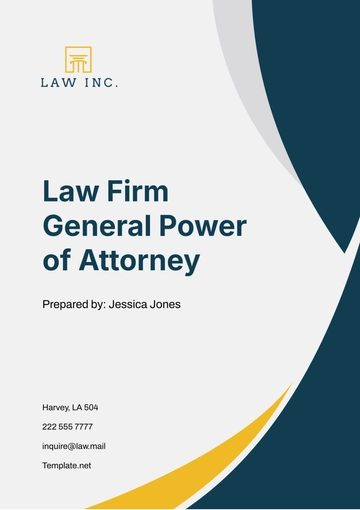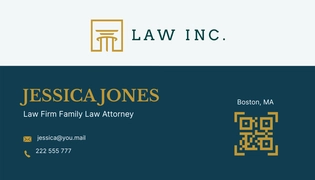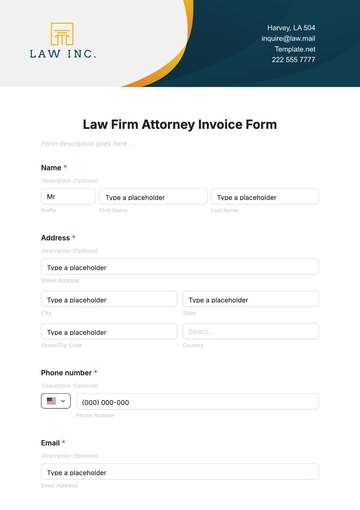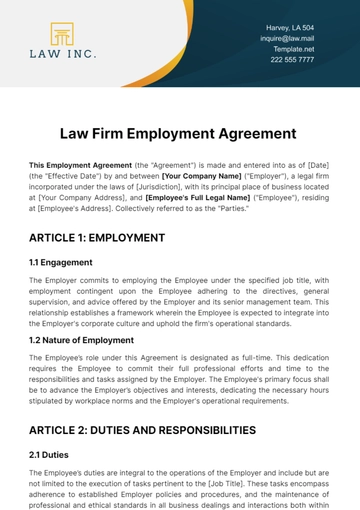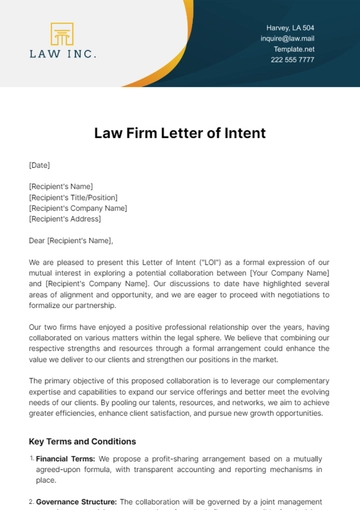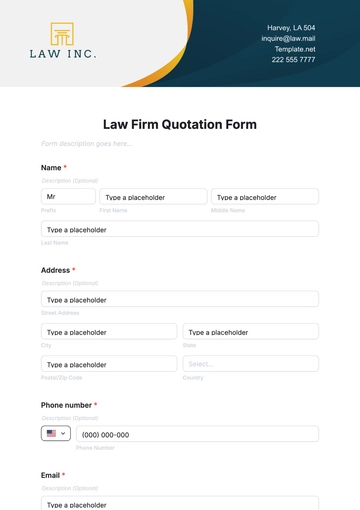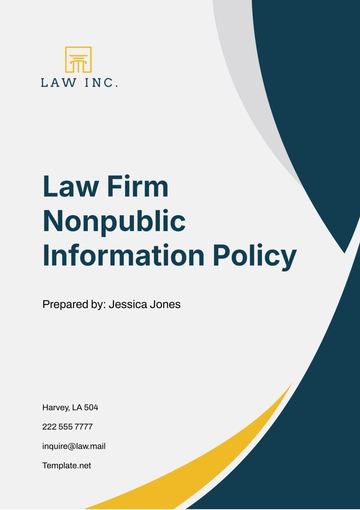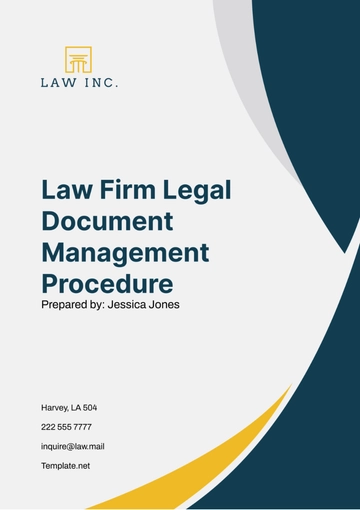Free Law Firm Legal Document Management Procedure
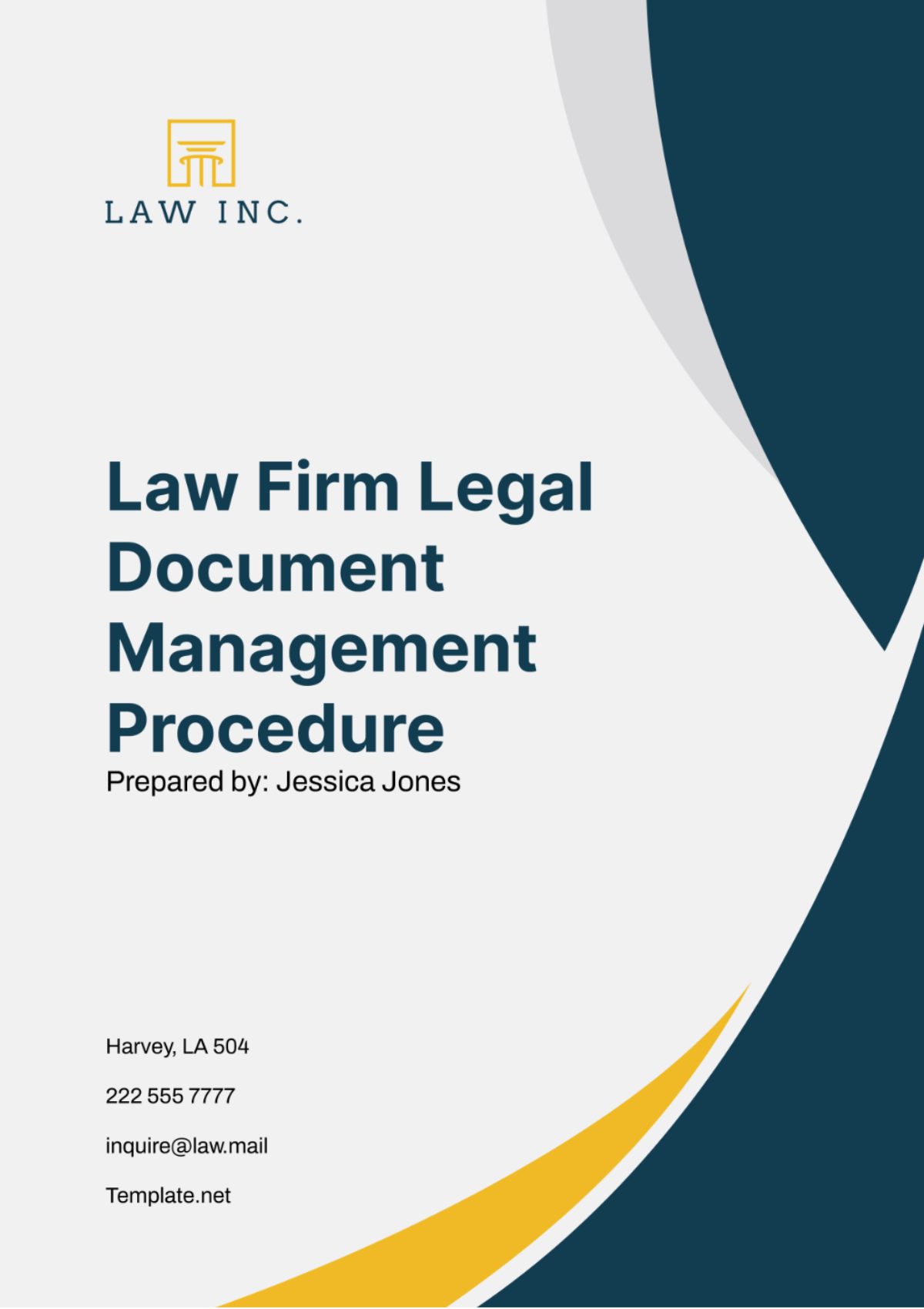
I. Introduction
A. Purpose
The purpose of this Law Firm Legal Document Management Procedure is to establish a systematic framework for the efficient handling of legal documents within [Your Company Name]. By providing clear guidelines and best practices, this procedure aims to enhance operational efficiency, ensure compliance with legal and ethical obligations, protect client confidentiality, and mitigate the risk of data breaches or loss. It serves as a comprehensive reference for all staff members involved in document management, outlining their roles and responsibilities in maintaining accurate and secure records of legal documents throughout their lifecycle.
B. Objectives
The objectives of this procedure are to streamline document management processes, minimize errors and inconsistencies in document creation, retrieval, and storage, and improve overall workflow efficiency within the firm. By adhering to the guidelines outlined in this procedure, [Your Company Name] seeks to uphold the highest standards of professionalism, integrity, and client service in its legal practice. Additionally, this procedure aims to foster a culture of continuous improvement, where feedback and insights from staff members are incorporated to refine document management practices and adapt to evolving legal requirements and industry standards.
C. Scope
This procedure applies to all legal documents generated, received, or maintained by [Your Company Name], encompassing various practice areas, client matters, and administrative functions. It covers documents in both physical and electronic formats, including client files, court pleadings, contracts, legal research materials, and internal communications. All staff members, including attorneys, paralegals, legal assistants, and administrative personnel, are expected to adhere to the guidelines and protocols outlined in this procedure to ensure consistency, accuracy, and confidentiality in document management practices.
II. Document Creation
A. Procedures for Drafting Legal Documents
Legal documents shall be drafted by licensed attorneys or qualified legal professionals within the firm, following standardized procedures and templates where applicable. Attorneys shall conduct thorough legal research, analyze relevant statutes, case law, and regulations, and consult with clients to understand their objectives and requirements. Drafting processes shall include multiple review stages to ensure accuracy, completeness, and compliance with legal standards and client instructions.
B. Quality Assurance
Before finalizing legal documents, attorneys shall perform quality assurance checks, including peer review, proofreading, and verification of citations and legal arguments. Quality assurance processes aim to identify and correct errors, inconsistencies, or ambiguities in the document content, ensuring its reliability and credibility in legal proceedings. Attorneys shall maintain detailed records of revisions and reviews conducted during the drafting process to facilitate accountability and traceability.
III. Document Classification
A. Classification Criteria
Legal documents shall be classified based on standardized criteria, including practice area, client or matter name, document type, and case or matter number. Classification criteria provide a structured framework for organizing and retrieving documents, enabling efficient access to relevant information for case management and client representation. Consistent application of classification criteria ensures uniformity and clarity in document organization across different practice areas and client matters.
B. Methods for Assigning Document Codes or Metadata
Documents shall be assigned unique identifiers, codes, or metadata tags to facilitate their categorization and retrieval within the document management system. Metadata fields, such as document title, author, date created, and keywords, provide additional context and search parameters for document classification. Staff members responsible for document management shall receive training on the use of document codes and metadata to ensure accurate and consistent application across the firm.
C. Training on Document Classification
Training sessions on document classification shall be provided to all staff members involved in document management to ensure proper understanding and implementation of classification methods. These sessions will cover the importance of document classification in facilitating efficient document retrieval, organizing information for easy access, and maintaining confidentiality and security. Practical examples and case studies illustrating different classification scenarios shall be presented during training to enhance comprehension and applicability. Additionally, staff members will be trained on how to utilize the document management system's features for assigning document codes or metadata effectively. Regular refresher training sessions may be conducted to reinforce knowledge and address any updates or changes to classification procedures.
IV. Document Storage
A. Options for Physical and Electronic Storage
Legal documents may be stored physically in designated file cabinets or storage rooms within the firm's premises, or electronically in the firm's document management system. Electronic storage offers advantages such as accessibility from remote locations, version control, and automated backup capabilities. However, physical storage may still be necessary for certain documents that require original signatures or for archival purposes.
B. Organization within the Document Management System
Documents stored electronically shall be organized into folders or categories within the document management system, reflecting the firm's classification criteria. Each document shall be labeled with relevant metadata to facilitate easy retrieval and identification. Folder structures and naming conventions shall be standardized across the firm to ensure consistency and uniformity in document organization.
C. Backup and Disaster Recovery
The firm shall implement regular backup procedures to safeguard against data loss due to system failures, hardware malfunctions, or cyber-attacks. Backup copies of electronic documents shall be stored securely in off-site locations or cloud-based storage solutions. Disaster recovery plans shall be established to restore access to documents in the event of unforeseen emergencies or disasters.
V. Access Control
A. Authorization Procedures
Access to confidential legal documents shall be restricted to authorized personnel only, based on their job roles, responsibilities, and need-to-know basis. Access permissions shall be granted and managed by the firm's IT department or designated administrators. Any requests for access to sensitive documents beyond an individual's authorized permissions shall be subject to approval by appropriate supervisory personnel or department heads.
B. User Roles and Permissions
The document management system shall support role-based access control (RBAC), allowing administrators to assign specific permissions and access rights to different user roles within the firm. User roles may include attorneys, paralegals, legal assistants, administrative staff, and IT personnel, each with varying levels of access to documents based on their job functions and responsibilities. Access permissions shall be regularly reviewed and updated as personnel changes occur within the firm.
VI. Version Control
A. Tracking Revisions
The document management system shall include features for tracking revisions and maintaining version control for legal documents. Each document shall be assigned a unique version number or timestamp to indicate its revision history. Changes made to documents shall be logged automatically, recording details such as the date, time, and author of each revision.
B. Document Locking
To prevent simultaneous editing and conflicting changes to documents, the document management system may include document locking capabilities. When a user opens a document for editing, it may be temporarily locked to prevent other users from making modifications until the editing session is completed and the document is saved or released.
VII. Document Retrieval
A. Search Functionalities
The document management system shall provide robust search functionalities to enable users to locate documents quickly and efficiently. Search options may include keyword search, metadata search, advanced search filters, and Boolean operators. Users shall be trained on how to effectively use these search features to retrieve relevant documents based on specific criteria.
B. Retrieval of Physical Documents
For physical documents stored in file cabinets or storage rooms, procedures shall be established for retrieving documents upon request. A designated staff member or department may be responsible for managing document retrieval requests and ensuring the proper handling and return of physical documents after use. Documentation of document retrieval activities shall be maintained for accountability and tracking purposes.
VIII. Document Sharing
A. Secure File Sharing
Documents may be shared internally among firm members or externally with clients, co-counsel, expert witnesses, and other parties involved in legal matters. Secure file-sharing methods shall be employed to protect the confidentiality and integrity of shared documents. This may include encrypted email, secure client portals, or file-sharing platforms with access controls and audit trails.
B. Client Communication
When sharing documents with clients, attorneys shall communicate the purpose, significance, and confidentiality of the shared documents clearly. Clients shall be informed of any restrictions or limitations on document sharing and provided with instructions for accessing and securely storing the shared documents. Written consent may be obtained from clients for sensitive documents shared externally.
IX. Retention and Disposal
A. Retention Policies
Retention periods for different types of legal documents shall be established based on legal requirements, regulatory guidelines, and business needs. Retention policies shall consider factors such as the statute of limitations, client preferences, and potential future legal disputes. Documents shall be retained for the duration necessary to fulfill legal obligations and client representation needs.
B. Document Disposal Procedures
At the end of their retention period, legal documents shall be disposed of securely to prevent unauthorized access or disclosure. Physical documents may be shredded or securely destroyed using approved methods to ensure irretrievable deletion. Electronic documents shall be permanently deleted from the document management system and any backup copies to prevent data breaches or unauthorized retrieval.
X. Security Measures
A. Data Encryption
Sensitive legal documents shall be encrypted both in transit and at rest to protect against unauthorized access or interception. Encryption algorithms and protocols shall comply with industry standards and best practices to ensure the confidentiality and integrity of document data.
B. Access Controls
Access to the document management system and confidential legal documents shall be protected by strong access controls, including user authentication, password policies, and multi-factor authentication where applicable. Access permissions shall be granted on a need-to-know basis, with regular reviews and audits to ensure compliance.
XI. Training and Compliance
A. Staff Training
All staff members shall receive training on document management procedures, security protocols, and privacy regulations to ensure compliance with firm policies and legal requirements. Training sessions shall cover topics such as document handling, classification, storage, retrieval, and disposal, as well as cybersecurity awareness and best practices.
B. Compliance Monitoring
Compliance with document management procedures and security measures shall be monitored regularly through audits, assessments, and reviews. Any instances of non-compliance or security breaches shall be investigated promptly, and corrective actions shall be implemented to address identified issues. Compliance monitoring shall be an ongoing process to maintain the integrity and effectiveness of document management practices.
XII. Audit and Review
A. Periodic Audits
Periodic audits of the document management system and related processes shall be conducted to assess compliance with internal policies, regulatory requirements, and industry standards. Audits may be conducted internally by designated personnel or externally by third-party auditors to ensure objectivity and thoroughness.
B. Continuous Improvement
Audit findings and recommendations shall be documented and used to identify areas for improvement in document management practices. Continuous improvement initiatives shall be implemented to address deficiencies, enhance efficiency, and strengthen security measures to adapt to changing legal and technological landscapes.
XIII. Document Management Committee
A. Establishment of Committee
A Document Management Committee shall be established to oversee the development, implementation, and enforcement of document management procedures within the firm. The committee shall consist of representatives from key departments, including legal, IT, compliance, and management, to ensure comprehensive oversight and collaboration. The committee may meet regularly to review document management practices, address emerging challenges, and make recommendations for improvements.
B. Responsibilities of the Committee
The Document Management Committee shall be responsible for setting document management policies, guidelines, and standards aligned with the firm's objectives and regulatory requirements. It shall oversee the implementation of document management procedures, including training initiatives, compliance monitoring, and audit activities. Additionally, the committee shall serve as a forum for addressing issues, resolving conflicts, and promoting continuous improvement in document management practices firm-wide.
- 100% Customizable, free editor
- Access 1 Million+ Templates, photo’s & graphics
- Download or share as a template
- Click and replace photos, graphics, text, backgrounds
- Resize, crop, AI write & more
- Access advanced editor
Manage legal documents with ease using the Law Firm Legal Document Management Procedure Template from Template.net. This editable and customizable template provides a comprehensive framework for organizing, accessing, and securing legal documents. With the AI Editor Tool, tailor the procedure to fit your firm's specific needs and streamline document management processes effortlessly.

